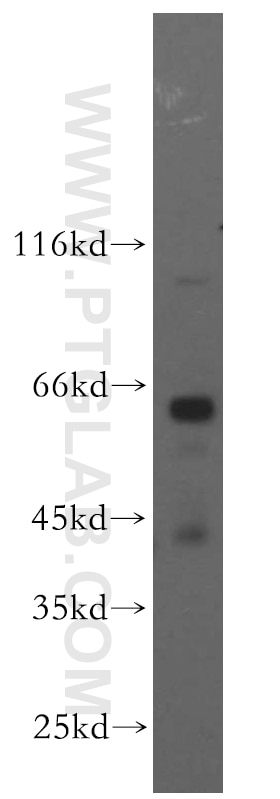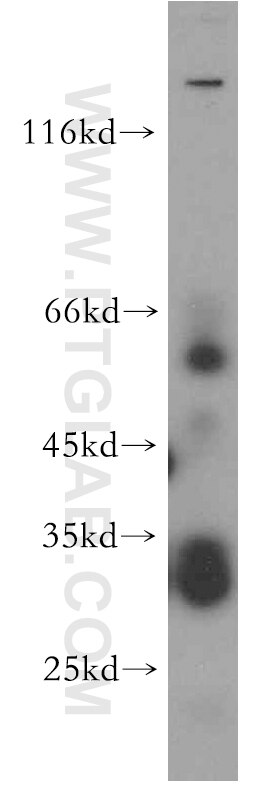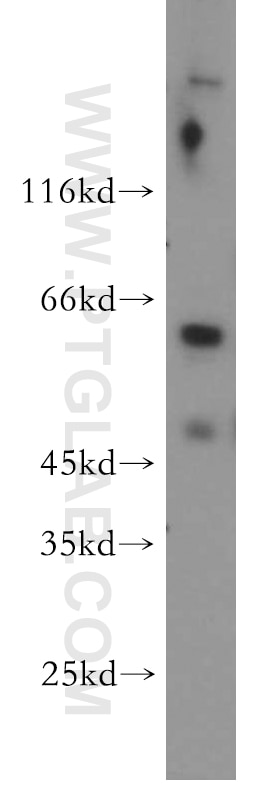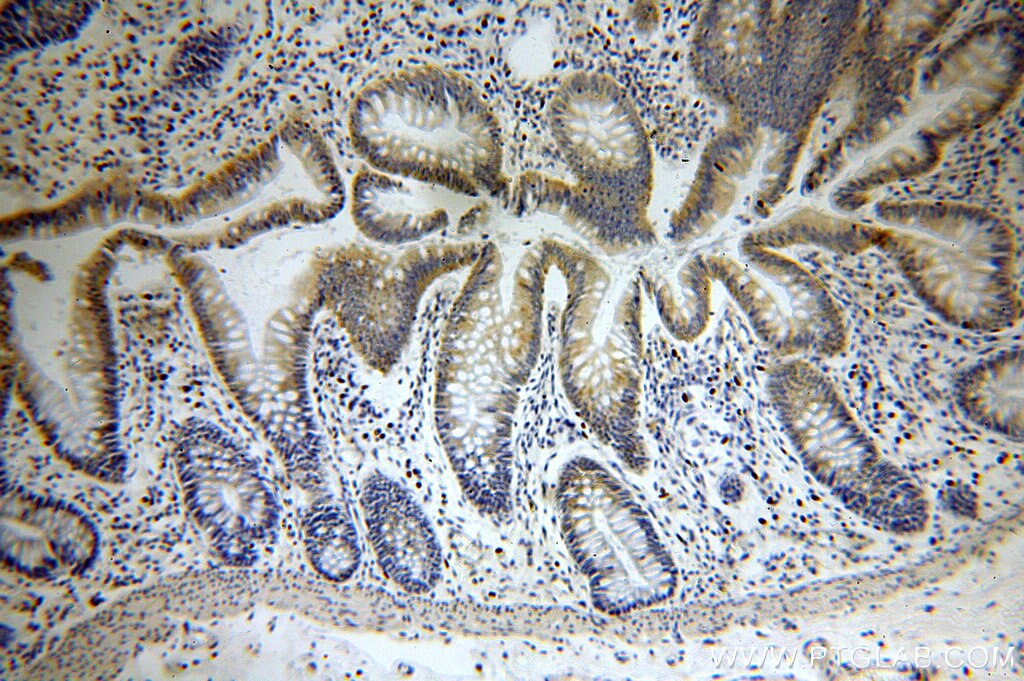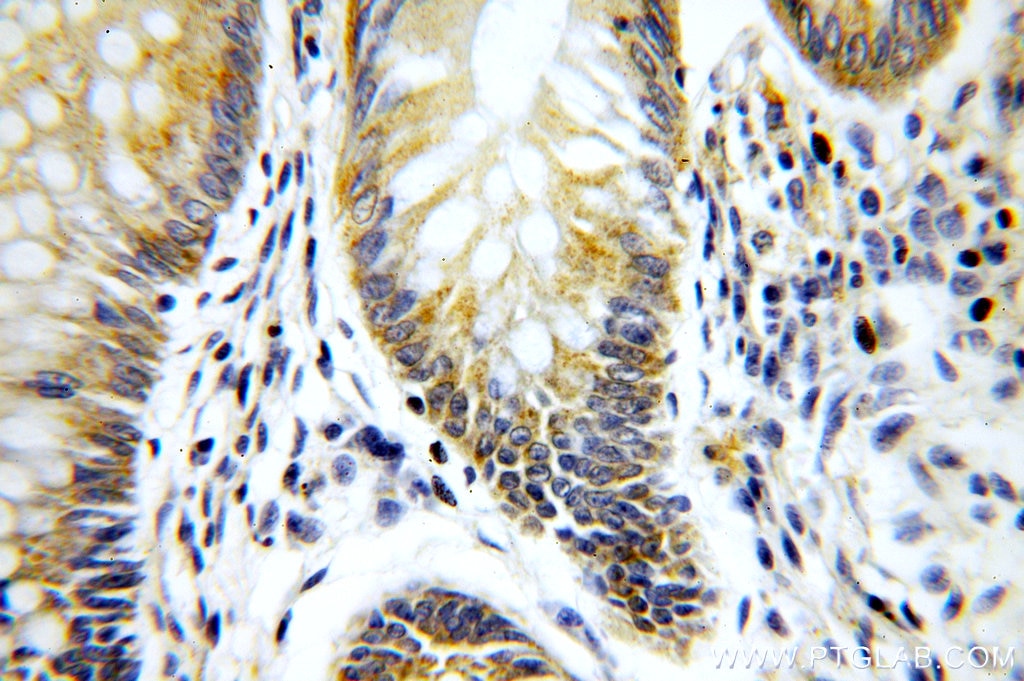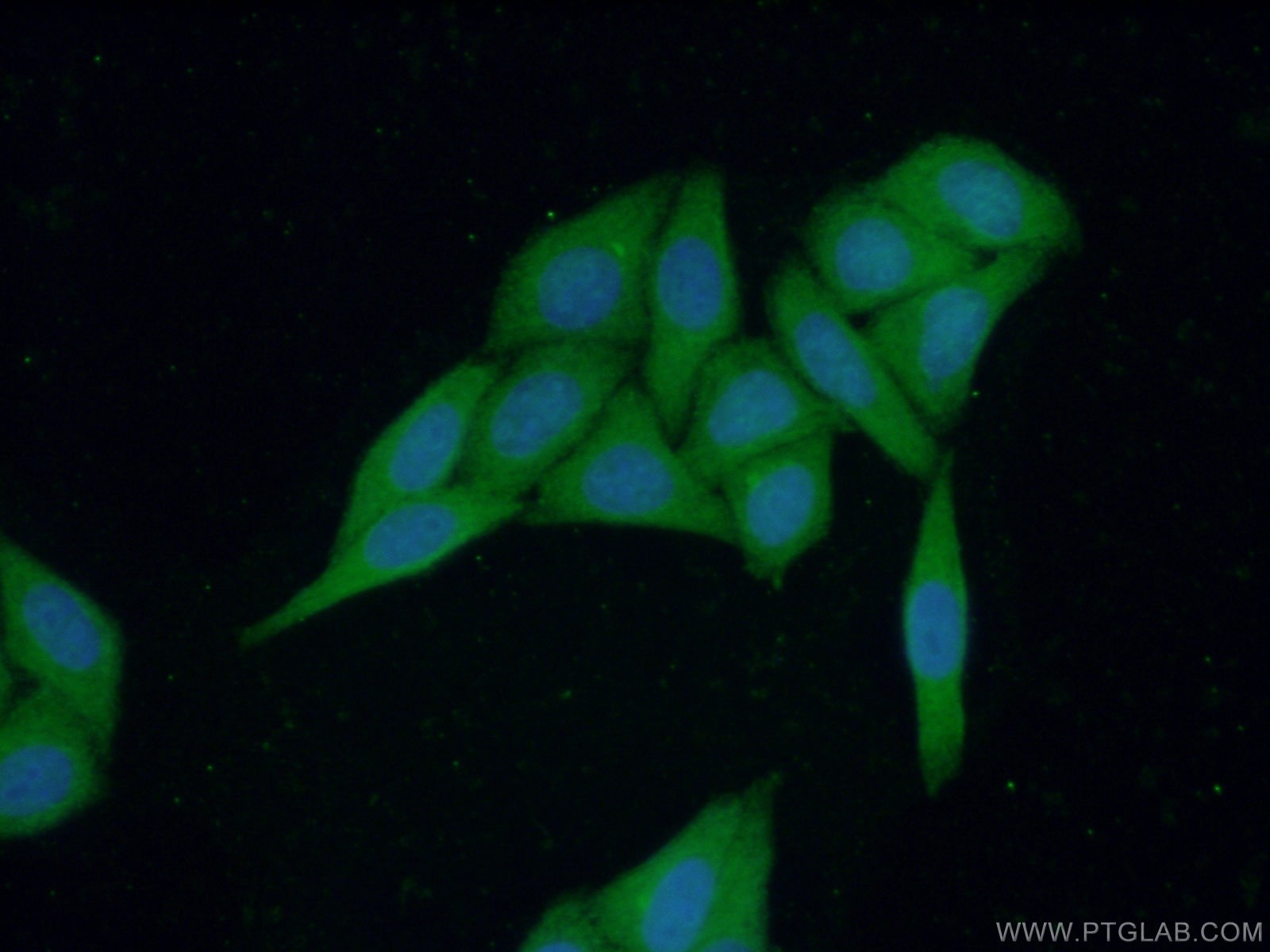Validation Data Gallery
Tested Applications
| Positive WB detected in | human brain tissue, HEK-293 cells, human testis tissue |
| Positive IHC detected in | human colon tissue Note: suggested antigen retrieval with TE buffer pH 9.0; (*) Alternatively, antigen retrieval may be performed with citrate buffer pH 6.0 |
| Positive IF/ICC detected in | HepG2 cells |
Recommended dilution
| Application | Dilution |
|---|---|
| Western Blot (WB) | WB : 1:1000-1:4000 |
| Immunohistochemistry (IHC) | IHC : 1:20-1:200 |
| Immunofluorescence (IF)/ICC | IF/ICC : 1:50-1:500 |
| It is recommended that this reagent should be titrated in each testing system to obtain optimal results. | |
| Sample-dependent, Check data in validation data gallery. | |
Published Applications
| WB | See 3 publications below |
| IF | See 1 publications below |
Product Information
17384-1-AP targets PIGZ in WB, IHC, IF/ICC, ELISA applications and shows reactivity with human, mouse, rat samples.
| Tested Reactivity | human, mouse, rat |
| Cited Reactivity | human, mouse |
| Host / Isotype | Rabbit / IgG |
| Class | Polyclonal |
| Type | Antibody |
| Immunogen |
CatNo: Ag11259 Product name: Recombinant human PIGZ protein Source: e coli.-derived, PET28a Tag: 6*His Domain: 435-579 aa of BC044640 Sequence: LVPGLEYLEQVVHAPVLPSTPTHYTLLFTHTYMPPRHLLHLPGLGAPVEVVDIGGTEDWALCQTLKSFTRQPACQVAGGPWLCRLFVVTPGTTRRAVEKCSFPFKNETLLFPHLTLEDPPALSSLLSGAWRDHLSLHIVELGEET 相同性解析による交差性が予測される生物種 |
| Full Name | phosphatidylinositol glycan anchor biosynthesis, class Z |
| Calculated molecular weight | 579 aa, 63 kDa |
| Observed molecular weight | 63 kDa |
| GenBank accession number | BC044640 |
| Gene Symbol | PIGZ |
| Gene ID (NCBI) | 80235 |
| RRID | AB_10697833 |
| Conjugate | Unconjugated |
| Form | |
| Form | Liquid |
| Purification Method | Antigen affinity purification |
| UNIPROT ID | Q86VD9 |
| Storage Buffer | PBS with 0.02% sodium azide and 50% glycerol{{ptg:BufferTemp}}7.3 |
| Storage Conditions | Store at -20°C. Stable for one year after shipment. Aliquoting is unnecessary for -20oC storage. |
Protocols
| Product Specific Protocols | |
|---|---|
| IF protocol for PIGZ antibody 17384-1-AP | Download protocol |
| IHC protocol for PIGZ antibody 17384-1-AP | Download protocol |
| WB protocol for PIGZ antibody 17384-1-AP | Download protocol |
| Standard Protocols | |
|---|---|
| Click here to view our Standard Protocols |
Publications
| Species | Application | Title |
|---|---|---|
Phenomics A Genome-Wide Association Study for Susceptibility to Axial Length in Highly Myopic Eyes | ||
Discov Oncol Single-cell RNA sequencing analysis reveals potential key prognostic markers in hepatocellular carcinoma | ||
J Biol Chem Persistent ER stress causes GPI anchor deficit to convert a GPI-anchored prion protein (PrP) into pro-PrP via the ATF6-miR449c-5p-PIGV axis |

